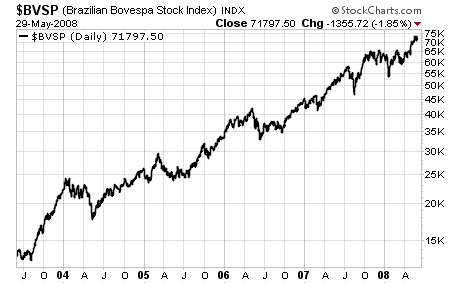Tyler Cowen's Blog, page 579
December 21, 2011
Los Angeles black markets in everything
LAUSD students hate the new lunch menu.
The district has received awards for improving lunches from the U.S.D.A and from the Physicians Committee for Responsible Medicine, but the students literally aren't having it. Participation in the lunch program is down, lots of food is being thrown away, kids are coming to class hungry and L.A. Unified's food services director, Dennis Barrett, acknowledged the rollout of the new menu was a "disaster," according to the Los Angeles Times.
When the district tested out the menu, it found that 75 percent of students liked the food, but the food at the taste-test did not have translate well to mass production. One student the Times spoke with Andre Jahchan, a 16-year-old at Esteban Torres High School, said the food was "super good" at the tasting but it was super gross on campus: the chicken pozole was watery, the vegetable tamale was burned and the noodles were soggy.
Adults have been selling "black market" candy, chips and instant noodles to hungry students, who have been ditching lunch and suffering from headaches, stomach pains and even anemia, the Times reports.
Here is more, and for the pointer I thank Todd Myers. Here is Todd's new book Eco-Fads: How the Rise of Trendy Environmentalism is Harming the Environment.

December 20, 2011
Don't overrate the good news
In Spain, the carry trade seems to be operating (FT):
However, the success of recent Spanish government bond auctions has raised eyebrows. Spain sold €5.64bn of three-month debt on Tuesday, with the yield paid to investors falling to 1.735 per cent, down from the 5.11 per cent seen in a similar auction last month. Brokers say smaller Spanish banks may be loading up on bills to use as collateral at the ECB operations.
But don't be too happy, here is from Jed Graham:
Much discussion — and possibly today's stock market rally — has centered on the notion that the European Central Bank's new policy of providing ultralow-interest, 3-year financing to banks can serve as a backdoor bailout of over-indebted sovereigns.
But don't get too excited. This bazooka is actually a bulldozer. Rather than having the potential to flatten sovereign debt problems, it can only make them pile up into an untenable mountain — with far too much maturing within the 3-year life of the ECB program.
…Note that today's [yesterday's] Spanish debt sale comprised 3-month and 6-month bills.
As Reuters pointed out, Spain, unlike Italy, has relatively little debt to roll over before April. Thus, the 3-month and likely even the 6-month bills carry little risk.
But as Spain issues more short-term debt to meet new borrowing needs and to roll over maturing debt, the ECB's backyard bulldozer is bound to produce a growing mountain of short-term funding needs.
Perhaps if Spain's oversubscribed sale on Tuesday were for 5- or 10-year debt, one might make a case that the ECB policy was a real game-changer. But banks are unlikely to risk damaging their own credibility with investors by loading up on longer-term issuance of at-risk sovereigns.
Here is more. The optimal policy here of course is time inconsistent. Lend out all the money and somehow forget to ask for it back, but don't make that clear up front. On a related note, another possible approach to the eurozone crisis is to have the United States guarantee all (non-Greek) eurozone debt, but if those countries can't pay up simply void the guarantee, claim Berlusconi or someone blackmailed the U.S. government, and reaffirm the commitment to U.S. Treasury securities. The market might just believe us.

Where are they?
Hey, you! Do you ever leave comments on MR?
NASA's Kepler mission has discovered the first Earth-size planets orbiting a sun-like star outside our solar system. The planets, called Kepler-20e and Kepler-20f, are too close to their star to be in the so-called habitable zone where liquid water could exist on a planet's surface, but they are the smallest exoplanets ever confirmed around a star like our sun.
The discovery marks the next important milestone in the ultimate search for planets like Earth. The new planets are thought to be rocky. Kepler-20e is slightly smaller than Venus, measuring 0.87 times the radius of Earth. Kepler-20f is slightly larger than Earth, measuring 1.03 times its radius. Both planets reside in a five-planet system called Kepler-20, approximately 1,000 light-years away in the constellation Lyra.
The link is here and for the pointer I thank Bernard Guerrero.

What is the real rate of corporate taxation in the United States?
The inclusion of taxes both at the corporate level and on dividends changes our perspective on which countries are high tax and which are low tax. For example, Ireland has the lowest statutory corporate tax rate among O.E.C.D. countries, yet is still a relatively high-tax country because of the high tax rate it imposes on dividends. By contrast, Japan has the highest statutory corporate tax rate but only the 12th highest overall rate because it has one of the lowest tax rates on dividends.
Those advocating a cut in the corporate tax rate today generally ignore the tax on dividends, as well as many other provisions of United States and foreign tax law that may reduce the effective tax rate well below the statutory rate.
A recent study found that only 25 percent of the largest American corporations pay anywhere close to the statutory corporate tax rate of 35 percent on their earnings, while 40 percent pay less than half that rate.
Indeed, General Electric, the nation's largest corporation, paid no federal corporate taxes in the United States in 2010, according to a report in The New York Times.
…while it may be a good idea to reduce the corporate tax rate as part of a tax reform package, the idea that this will jump-start growth is nonsense.

The No Brainer Policy of the Year
Behind Door #1 are people of extraordinary ability: scientists, artists, educators, business people and athletes. Behind Door #2 stand a random assortment of people. Which door should the United States open?
In 2010, the United States more often chose Door #2, setting aside about 40,000 visas for people of extraordinary ability and 55,000 for people randomly chosen by lottery.
It's just one small example of our bizarre U.S. policy toward high-skill immigrants.
That is the opening of a short piece by me over at The Atlantic, drawn in part from my TED e-book Launching the Innovation Renaissance (Nook, iTunes).

Assorted links
1. Why boom times kill, and Austin Frakt on the Daeho Kim Medicare costs paper.
2. Obama meets Gurrumul, Queen Elizabeth and Crown Princess Mary of Denmark meet Gurrumul.
3. Good interview with Brian Leiter.
4. Roland Fryer holds out for RCT, the DC government will not oblige.
5. A dog's life, and how much can we prepare for the long run?

India and the Promise of Productivity
In the comments to Anti Chain Store Policies in India and America, "Lark" posted a long "refutation" from Triple Crisis of the "neo-liberal" arguments for retail reform in India. I will focus on one remarkable argument:
…experience across the world makes it incontrovertible that large retail companies displace many more jobs of petty traders, than they create in the form of employees. This has been true of all countries that have opened up to such companies, from Turkey in the 1990s to South Africa. Large retail chains typically use much more capital intensive techniques, and have much more floor space, goods and sales turnover per worker.
One estimate suggests that for every job Walmart (the largest global retail chain) creates in India, it would displace 17 to 18 local small traders and their employees. In a country like India, this is of major significance, since around 44 million people are now involved in retail trade (26 million in urban areas) and they are overwhelmingly in small shops or self-employed.
Of course this is no refutation, fewer jobs are precisely the point. What India needs is fewer jobs; fewer jobs in retail, fewer jobs in apparel and, most of all, fewer jobs in farming. India cannot become even a middle income country if most of its workers, for example, are farmers. To improve its standard of living, India must use fewer people to produce more agricultural output.
Fewer workers in farming (or retail) means more workers producing more goods in other industries. The same basic lesson holds throughout an economy, it is the declining sectors that allow other sectors to advance. Instantaneously? Immediately? With higher wages for every worker? No. Transitions always involve some pain; creation always involves some destruction; growth always involves change. The alternative, however, is stagnation.
The politics of growth are difficult because those who lose from change are always present and are often more numerous and perhaps even more deserving than the present winners, the capitalists, the business people, the international mega corps; but today's losses and gains are fleeting, the permanent winners are the workers and consumers of the future who will know only the benefits of productivity.

That was then, this is now
In 2004, I wrote this to Alex:
The United States remains a strong and prosperous country. Our infrastructure, national culture of innovation, human capital, and economic dynamism are unparallelled in world history. The Bush fiscal policies, whatever their irresponsibilities, costs, and drawbacks, haven't changed those core facts.
So I walked down to Alex's office and issued him the following challenge: if you think I am wrong, sell all your stocks and go short on U.S. Treasury securities (and long on Brazil, if you wish!). With all the money you will make, you can buy out my half of this blog.
In my own defense, 2004 was the year when the available run of productivity statistics was looking the best, and there was no reason to think the 2001-2004 numbers were biased or misleading.
For the pointer I thank…Alex.
p.s. he didn't do it.

December 19, 2011
Only joking
Nothing to see here, move on people…
Safaripark Beekse Bergen, near the Dutch town of Tilburg, boasts nine lions, 13 giraffes and a herd of almost 30 zebra. But this month the theme park reported sightings of an even more remarkable beast – a previously extinct specie, the Dutch guilder.
Thousands of guilders flooded into the park's cash registers after it announced it would accept the former national currency for one weekend, in a promotion tied to the European Council summit earlier this month. At the ticket booth, thrifty locals dug into their coats to produce faded Fl 10 bills and jingling coins.
The guilder sale was a "comical stunt" to take advantage of the commotion around the euro, said a spokeswoman for the safari park's parent company, Libema. But the promotion also tapped into the Dutch public's widespread disillusionment with the euro and nostalgia for their old currency.
The FT link is here.

Modigliani-Miller markets in everything the culture that is China
They only look like baby pandas.
These little bundles of joy are actually chow chow dogs that have been dyed black-and-white to look like pandas.
Dyeing pets has been a trend in pet pampering for quite some time. At last summer's Pets Show Taipei, there was a fierce dog-dyeing competition. Check out photos.
But dyeing your pets to look like other wild animals is a more recent development.
The full story is here and for the pointer I thank this guy. Don't miss the other photos at the link, for instance:
And:
Tyler Cowen's Blog
- Tyler Cowen's profile
- 844 followers







